



Story from John Vonderlin
Email John ([email protected])
Harry Cowell Sued for
Thousands.
MRS. MAJORS HEAVY CLAIM.
Breach of Promise and Heir-ship of Her Child.
ON THE CIRCUIT COURT DOCKET.
The Plaintiff Is of the Old Castro
Family, and the Defendant Is
Heir to Millions.
One of the most sensational breach of
promise cases ever brought to trial in this
city was placed on the calendar of the
United States Circuit Court yesterday. It
will be tried about the middle of May.
The defendant in the case, Harry S.
Cowell, is the second son of Henry: C.
Cowell, the millionaire lime-king of Santa
Cruz. Tbe Cowells are in the lime and
cement business, at 211 and 213 Drumm
street, in this city, and reside ‘at 413 Hyde
street. The plaintiff: is Mary Antonia Castro
Majors, and she is a granddaughter of the
old Alcalde, Rafael Castro, who came to
Santa Cruz with the Spanish, priests; a.
hundred years ago. She has money and
friends and a strong determination and
yers are confident of success and have
letters written by Harry Cuwell that will
cause a tremendous sensation when pro –
duced in court.
The woman sues to recover $50,000 for
breach of promise and will contest for a
large share of his wealth, which she de –
clares belongs to their child and his heir.
Tbe suit was originally commenced in
the Superior Court of Santa Cruz.
The woman tells a strong story of her
love for Cowell and of his desertion. In
an interview yesterday she said he
would pay dearly for the humiliation he
had brought upon her, “or,” she added,
“I will cut his heart out of his false body
and drag it through the streets of Santa
Cruz.”
And the slender bands clutched until
the shapely nails cut deep into the brown
flesh. Tbe color came and went in the
Spanish face, while the flashing black
eyes boded no good for the future welfare
of tbe truant Harry Cowell.
It is almost a century since the old Al –
calde, Rafael Castro, grandfather of Mary
Antonia Castro Majors, came to the city
of Santa Cruz and builded him a home
and reared his children in the old adobe
known as the Cattro mansion. All of the
woodwork and heavy timbers in the man –
sion were brought around Cape Horn, and
are to-day in a perfect state of preserva –
tion, though the sparkling eyed senoritas
and the caballeros are long since dead, and
their descendants, a mere handful,
crowded to the farther corners, where they
occupy little tramped-up garden spots or
crevices in the bills with just enough soil
to live upon.
Yet, time was, when the Castro brothers,
Rafael, Joaquin, and Jose Ignacio, owned
thousands upon thousands of acres of the
finest land in the State of California. But
the greedy, grasping American came, and
the story was soon told and time’s mantle
of oblivion clings as closely about the
early history of the Castro family as does
the old English ivy around the crumbling
walls of the Castro mansion.
It was here that Antonio Castro, father
of Henry Antonia Castro Majors, was born.
When quite a young man he went to San
Luis Obispo. where he married Mary Jack –
son, an English heiress of good family.
He owned a large dairy and other valuable
property in San Luis Obispo.
After the birth of his daughter, Mary
Antonia, he returned to Santa Cruz, where
in due course of time she married her
cousin, Robert Majors. His mother was
Maria de Los Auceles Castro, a daughter
of the old Alcalde Rafael Castro, she hav –
ing married Joseph Majors, a brainy En –
glishman who for some price long since
forgotten; bought of the old lndian Chief
Cinote a portion of the land now covered
by the city of Santa Cruz, Mission Hill,
Logan Hills, Limekilns and the bitumen
mines.
On a slight bluff of land a mile west of
town Mr. Majors built him a home
costing $40,000 Years after his death the
house with all it contained was burned to
the ground.
Some fifty feet below the house, on a
beautiful stream of water known as
‘Majors Creek, Joseph Majors built a grist –
vmill costing $30,000. This mill ground the
first flour in the valley.
To-day the old mill, with its broken
wheel and weather-beaten boards, stands
a grim monument to the sleeping past.
old whitewashed shanty: at the door a
peach-tree in full bloom; across its per –
fumed limbs are a half dozen strips of
*’jerky” drying .in. ilie’ sun. Tied to the
eaves of the low-roofed house is a string of
crimson peppers reaching nearly to the
ground. Inside is Maria de Los Angeles
Castro Majors her only. companions are
her aged relatives, poverty, a. broken
guitar and memories of earlier and happier
days;
his son, inherited much of: his father’s
valuable property. He was part owner
and manager of the bitumen mines, and
lived with his family on a farm adjoining
the lime-kiln property of the millionaire
Cowell.
was familiarly called by his friends,
strolled into Jock Merrill’s saloon. Here
he met several friends, among them
Jimmy Harris. Some sharp words passed
between Majors and Harris, who had
always been the best of friends. Harris,
without taking his pistol from his pocket,
shot Majors three times, one shot passing
nearly through his body, another through
tbe flesh of the right leg, and a third
lodged in tbe hipbone of the left leg. This
shot caused his death eleven mouths there –
after. Majors, who was known to be the best
shot and one of the bravest men in tbe
State, turned coolly upon Harris and
quicker than a flash sent six bullets
through his heart.
Majors was taken home, and during his
long illness and pathetic death his brother
Odd fellows were in constant attendance,
doing all in their power to alleviate his
suffering and comfort his afflicted family.;
At bis death they assumed guardianship
over the widow and the seven orphaned
children.
During Bob Majors’ long illness Henry
C. Cowell and his two sons, Ernest and
Harry, called several times each week to
ask about his welfare.
When the funeral was over Harry
Cowell still contiuued his visits to the
widow—and here was the beginning of the
end.
With his superior business judgment,
being a money-making man of the world,
he advised her as to many things, sucb as
the building of fences, roads and bridges,
and various ways of improving the rancho,
thereby winning her confidence and friend –
ship, and, long before she knew it, her
heart’s affection as well.
Then began his love-making and prom –
ises of marriage; and as ‘he never made
any secret of bis preference for her she
did not dream of doubting bis sincerity.
Together they walked arm in arm along
the lane leading from the senior Cowell’s
home to that owned by Mrs, Majors.
Together they drove into town several
times a week; In fact, they were seen con –
tinually in each others’ company, and the
public had grown so accustomed to seeing
them thus that comments were seldom
passed upon the subject. She says he had
said to her many times, “I love you and
will make you my wife any time that you
may name,” and she, happy and content
in her love and confidence in him, waited
from month to month for a more oppor –
tune time. Several times he had said:
“We must be married soon, for I cannot
permit people to say unkind things of the
moiher of my child. l am pleased that a
child of mine should be the first heir to in –
herit the Cowell millions,” are words she
alleges he uttered.
He even insisted, so the woman declares,
on bringing a minister to the house to per –
form the marriage ceremony.
But a young son of Mrs. Majors had been
brought home a short time before with a
badly crushed knee. The bouse was all con –
fusion and disorder, and she proposed go –
ing to town to be married.
Then a happy thought occurred to him.
He had received a letter from his mother
and sisters, wbo reside in an elegant home
at 413 Hyde street, in this city, inviting
him to take dinner with them.
The fateful to-morrow being Wednes –
day he said he would go to the city and re –
main over Thursday, aud on Friday morn –
ing’s early train he would go to San Jose,
where she should meet him in the depot.
They would then go to a minister and be
married.
From there they would go to Salinas on
a wedding tour, and rpturn to Santa Cruz
whenever it should best suit them. This
arrangement being perfectly satisfactory
he slipped the plain gold ring from her
finger that her dead husband had given
her for a wedding ring, saying he would
take it as a measure for a diamond ring
which be would put on her fiuger at San
Jose.
Then after repeatedly cautioning her
not to disappoint him, but to be sure and
meet him in the station at San Jose Fri –
day morning, he took his departure, and
from that day to this Mary Antonia Castro
Majors has never set eyes on Harry Cowell
or the plain gold ring.
Thanksgiving morning Mrs. Majors came
to town and saw Senator Burk and L. F.
Smith, as well as many other friends, and
told them she was on her way to San Jose,
where she would be married to Harry
Cowell on the following day. They all
congratulated her upon her apparent good
fortune.
Being short of money she went to Char –
lie Clark, the jeweler, and got £30, telling
him for what purpose she wanted the
money. All of these witnesses hare been
subpenaed to testify at the trial.
In San Jose she remained over night at
the St. Charles Hotel. In the morning she
went to the station, and there, in the cold
cheerless waiting-room, she sat all day,
eagerly scanning the face of each new –
comer, searching in vain for the bride –
groom that never came.
When the last train of cars in the even –
ing pulled out for Santa Cruz she came
in me, cold, lonely nnd deserted, with
heart and brain filled with strange fore –
bodings of evil, yet never for a moment
doubting him. She kept saying over and
over to herself, “There has been some mis –
take, something dreadful has happened to
him.”
On reaching Santa Cruz she drove out to
the senior Cowell’s place, feeling sure that
some massage was awaiting her there.
The house was dark and the sleepy ser –
vants declared that none of the family
was at borne and that there was no mes –
saee for her.
Then, for the first time. It slowly dawned
ucon her that she had been duped and de –
ceived and made the shame and laughing –
stock of the community in which she
lived, and her fury had no bounds, and
well it was for faithless Harry Cowell that
he was not within reach of those slender
cruel hands that night.
When sufficiently recovered from the
first shock of mortification and disappoint –
ment Mrs. Majors came to town and by
ber attorney. Senator Bart Burk, filed a
complaint in the Superior Court of the
county of Santa Cruz, charging Harry
Cowell with breach of promise of mar –
riaee and asking for $50,000 damages.
• After having resided in the State of
Washington for two years Cowell returned
to Santa Cruz. The papers in the case
were immediately served upon him, and
lie by his attorney, £. S. Pillsbury, filed
an order transferring the cause from the
Superior Court of the county of Santa
Cruz to the Circuit Court In this city, after
which be returned to the State of Wash –
ington.
Miss Cowell, a sister of the defendant,
was seen at the family residence at 413
Hyde street, yesterday, but refused to dis.
cuss the case. She was the only member
of the family at home except her invalid
mother, tier father and brother, she said,
were both out of the city.
“I know nothing of my brother’s affairs,
and the case of which you speak has never
been mentioned to me.” she said. “Mv
father will probably return In a few days.”
When asked when her brother would
return. Miss Cowell said:
“I don’t know, but we expeot them both
very soon.”
Mr. Pillsbury, who represents young
Cowell, Is also out of town.
——————-
**Please read the sequel below.
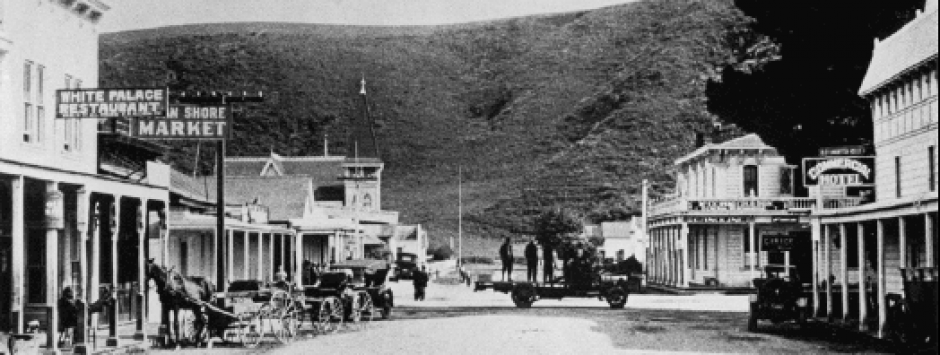



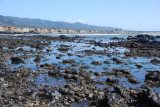
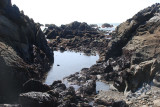
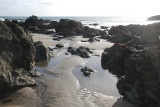

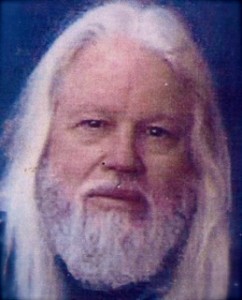 By
By 







